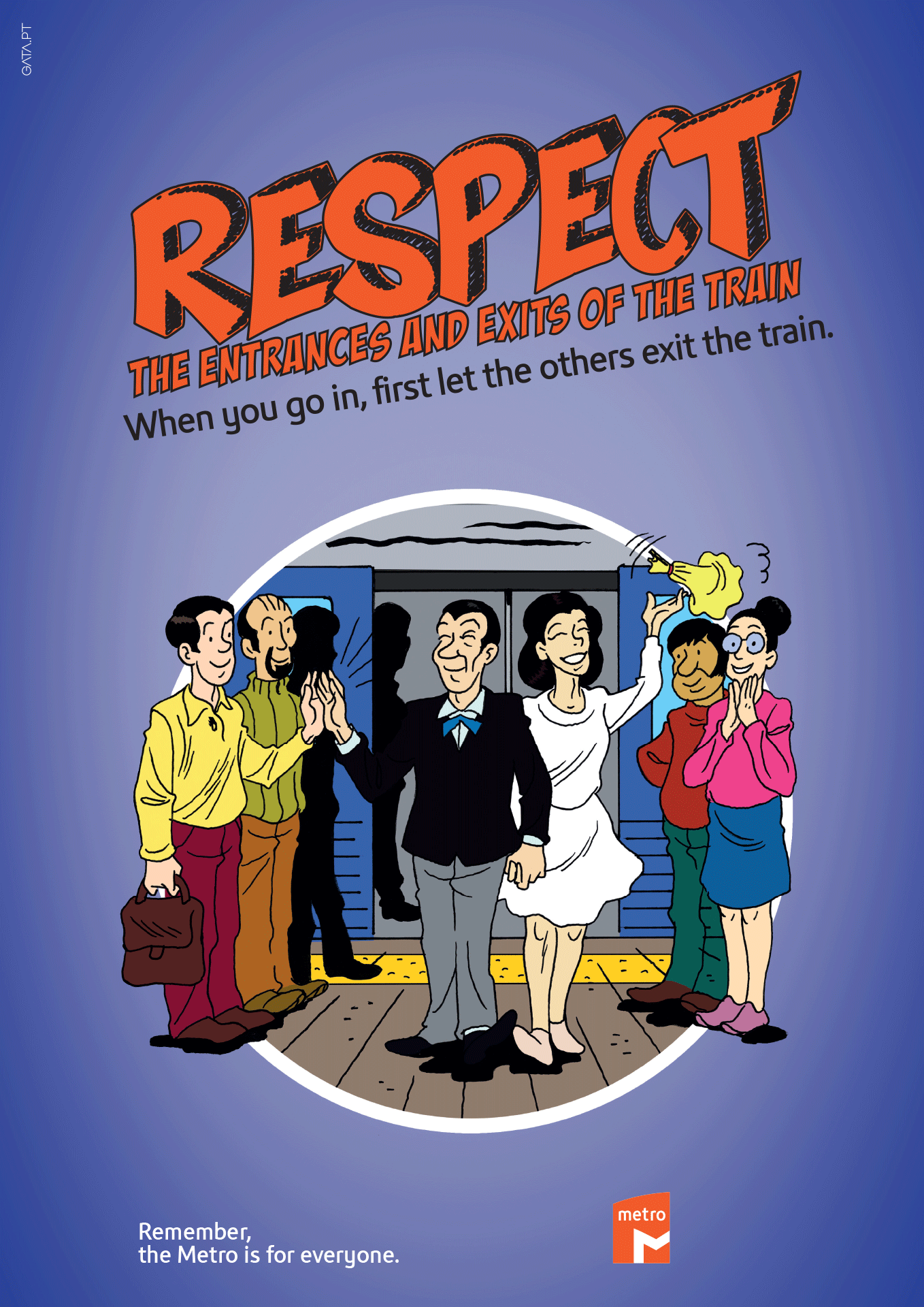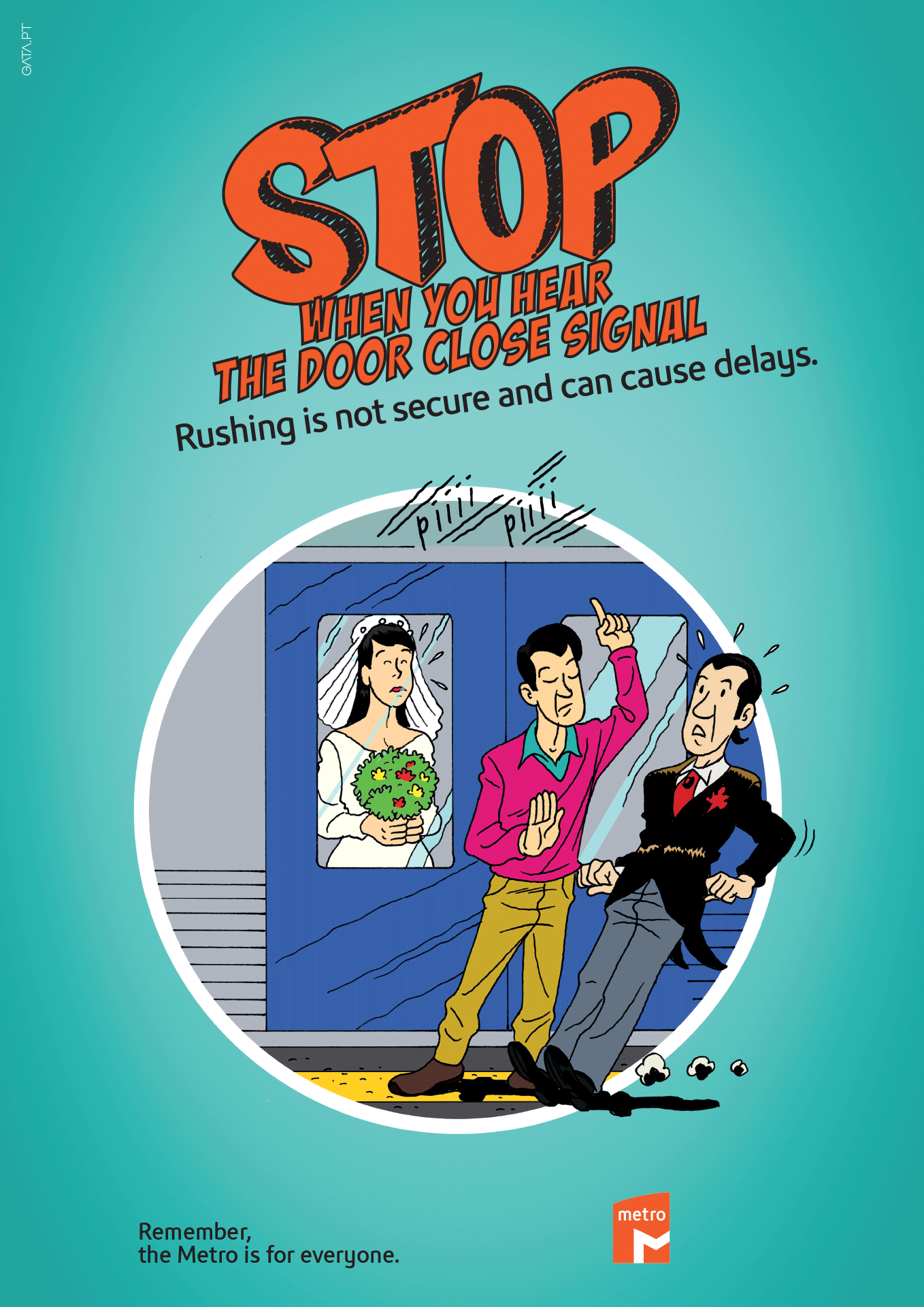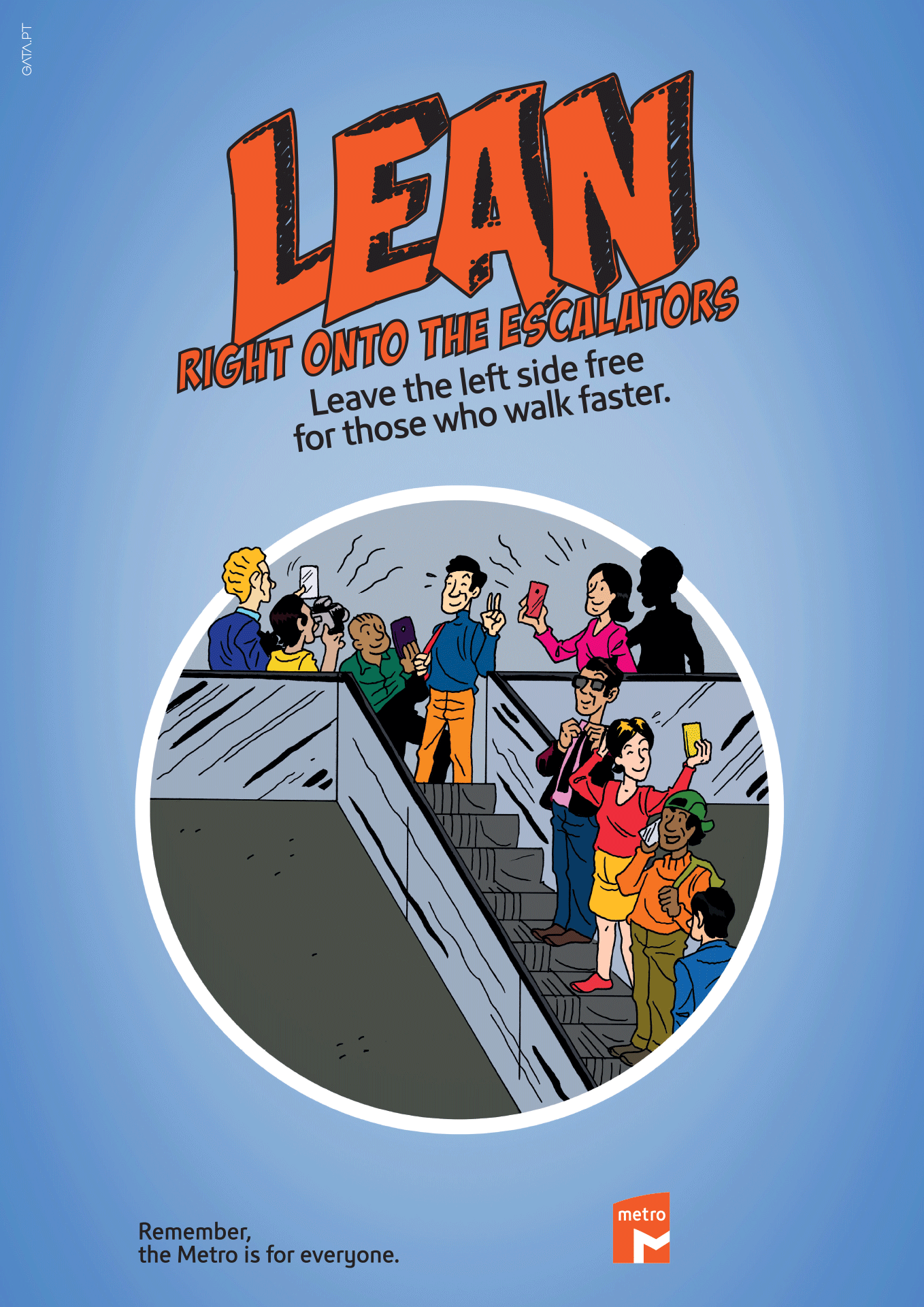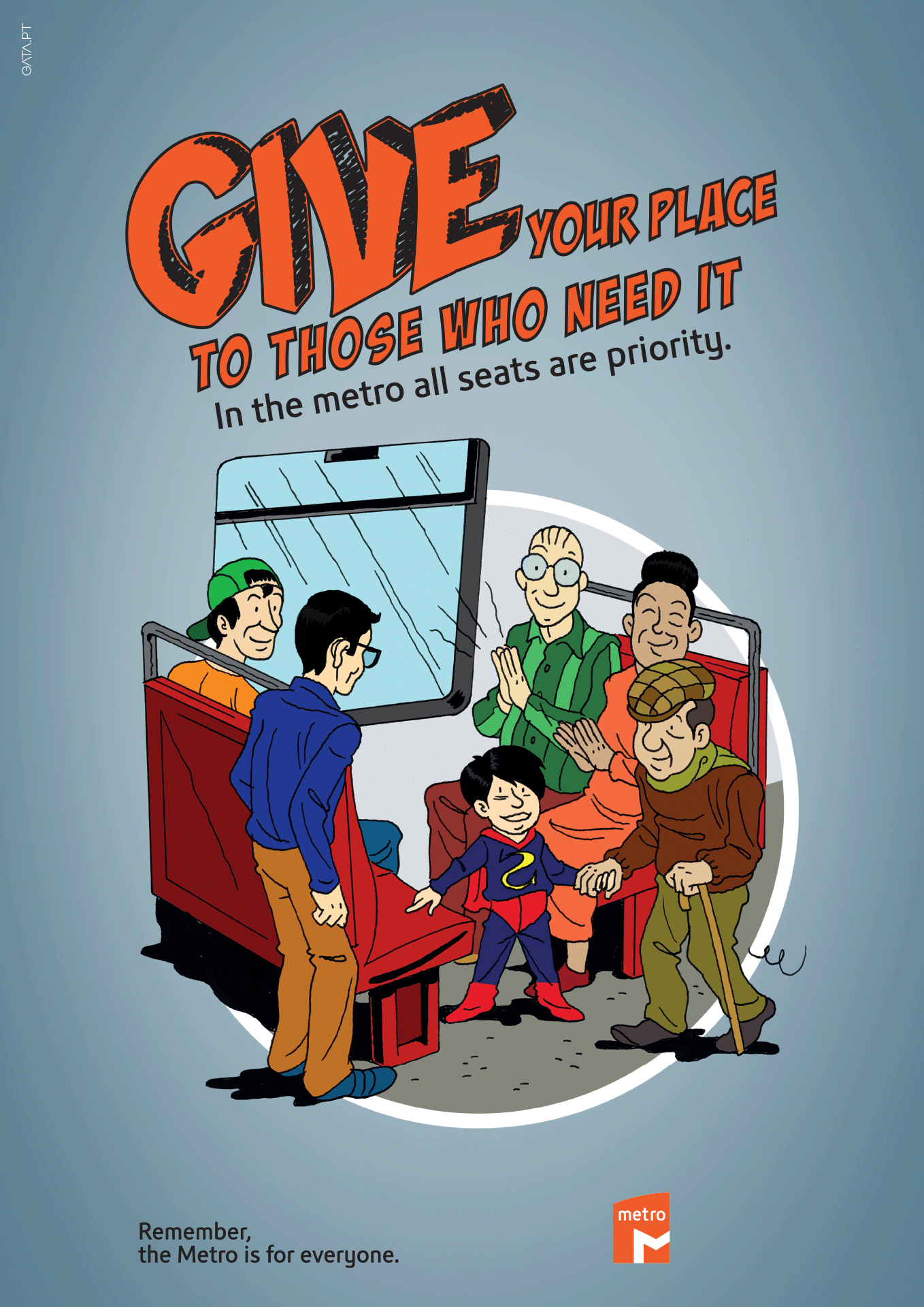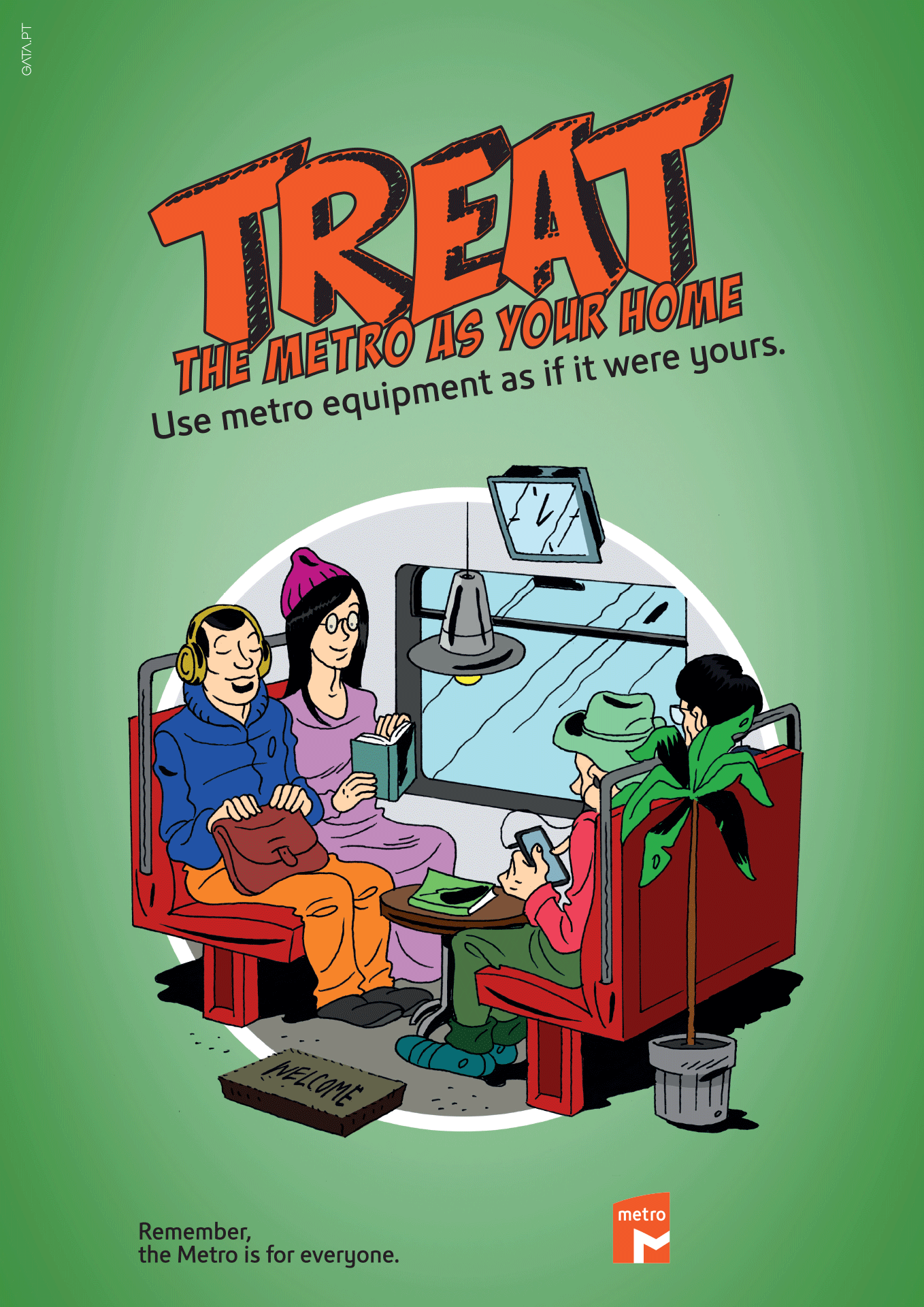
Using the Metro
In order to provide the best possible service on our network, your collaboration is crucial.
When using the Metro, abiding by the rules will improve service quality with benefits for all.
Metro journey
A journey begins when you cross the entry gates at the departure station and ends when you cross the exit gates at the arrival station.
Travelling on the Metro
Requires holding an electronic travel card (Viva Viagem or navegante) loaded with a valid ticket.
Always keep the travel ticket intact until crossing the exit gates and show it to the ticket inspectors whenever requested.
Travel tickets
There are two types of tickets to travel on the Metro:
1) Occasional tickets to top up the Viva viagem card;
2) Frequent tickets/passes to top up the navegante card.
Mandatory validation
It is mandatory to validate your ticket at the stations’ entrance and exit gates (touch in and touch out).
Ticket validations
Validation is made by swiping your card over the reader on the access gates.
The ticket is validated when the reader displays a green light and the access gate opens.
Validity of occasional journeys
Except in situations of service disruption, occasional journeys are valid for three hours from the time of entry validation, provided that the exit channels are not crossed.
Travelling with children
1) Children under 4 are entitled to free transport;
2) Between the ages of 4 and 12, all children holding a navegante card (with Child profile) can travel free of charge on the transport operators networks within Lisbon’s Metropolitan Area.
Reduced mobility
Passengers with reduced mobility should check the Metro network map in advance to make sure both departure and arrival stations are fully accessible.
We also recommend checking beforehand the operating status of existing lifts and escalators by contacting our Call Centre.
Special access gates (wide gates)
The stations’ special access gates are reserved for passengers:
– with reduced mobility;
– carrying baby strollers or large objects;
– travelling with children under the age of 4.
The special gates are usually set for exit mode only and should be used with assistance from the station staff, if necessary. Station staff can be reached through the Help Points.
Station Help Points
Use the Help Points at the access gates and ticket machines to reach Metro staff for information or help.
Carriage of bicycles and other soft modes of transport
A maximum of 2 bicycles per metro train car are allowed and only when there are no large crowds of passengers.
Carrying scooters, skates, hover boards, unicycles, skates or any other similar transport soft modes is also allowed on the metro. However, it is strictly forbidden to ride and/or park these transport soft modes within the metro’s premises.
Carrying large objects
Objects which may affect the safety or comfort of other passengers due to their nature, volume, shape or smell, may not be carried on the metro. It is forbidden to carry toxic, explosive, radioactive, corrosive and flammable substances, as well as pressurised gases.
Carrying animals
Your pet can travel with you on the train in proper carriers so that it will not bother, disturb or frighten other passengers.
Standing on the platform
For safety reasons, it is not permitted to stand between the edge of the platform and the yellow stripe on the floor.
Service Alterations:
The Metro is not liable for any losses incurred due to alterations in the service (such as earlier or delayed departures, cessation or interruption of services, reduction in the number of trains and changes or modifications in train operations), whether due to strikes or force majeure circumstances.
Remember, the Metro is for everyone
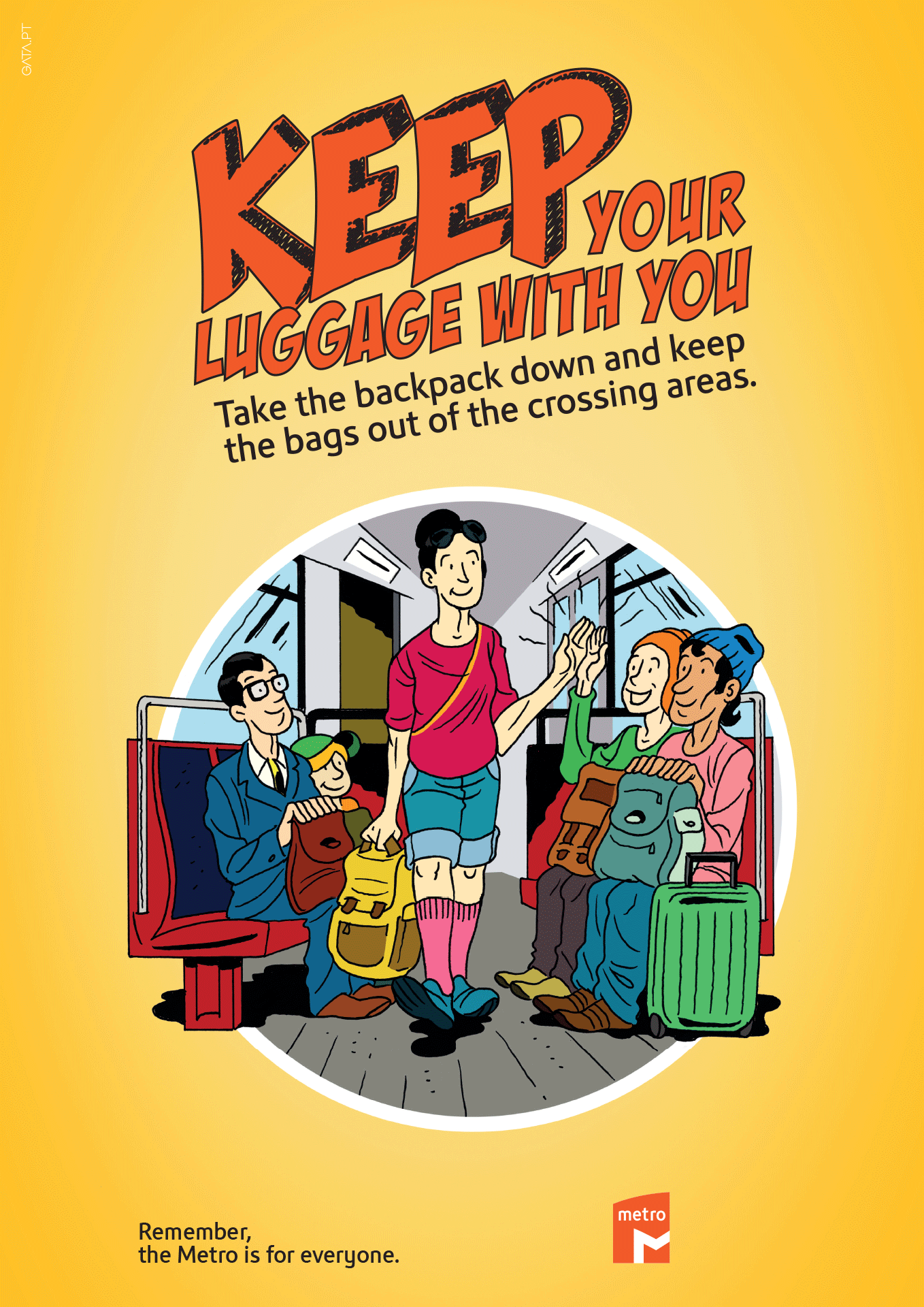
Take the backpack down and keep
the bags out the crossing areas.
Steps to a safer Metro
Mobile phone
Don’t use it inside the train while the doors are open. Avoid being victim of robbery.
Objects and large sums of money
For your safety avoid keeping valuable objects and large sums of money in full view.
Isolated places
For your safety, when it’s quieter, avoid isolated places.
Belongings
Keep your belongings close to you, and never leave them unattended.
Be careful of pickpockets
Keep your purse or wallet and your mobile phone in a safe place next to your body.
Robbery
If you are the victim of a robbery, do not react. Inform the subway or the Police employee immediately.

